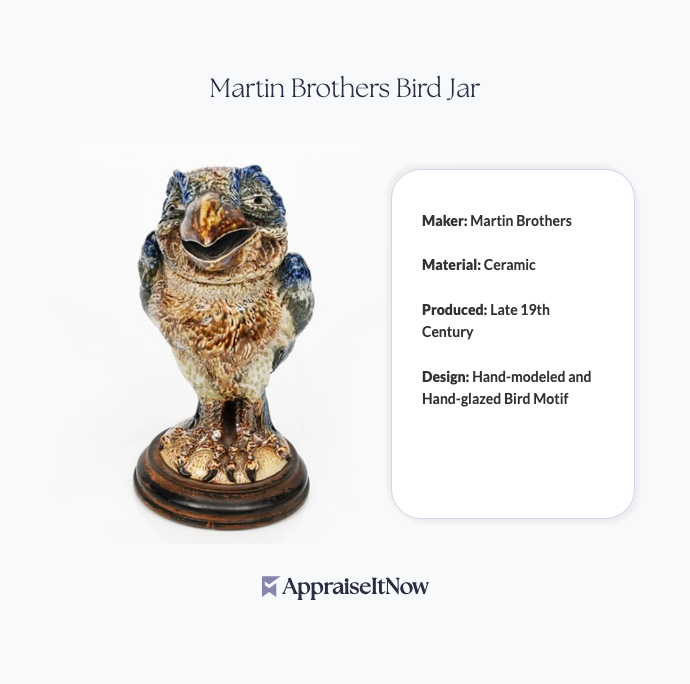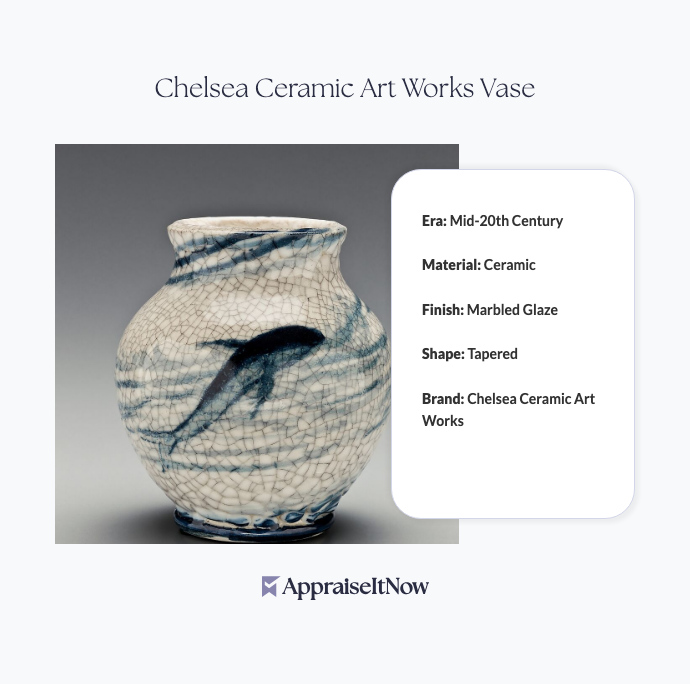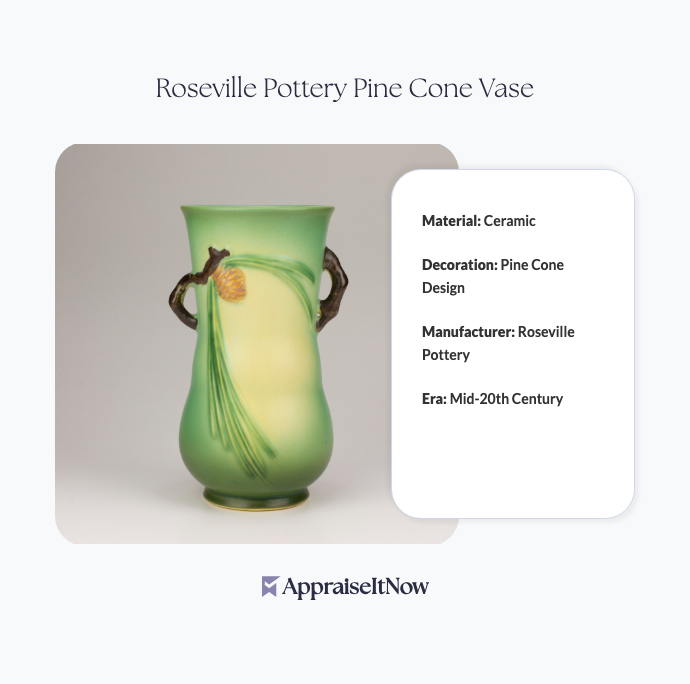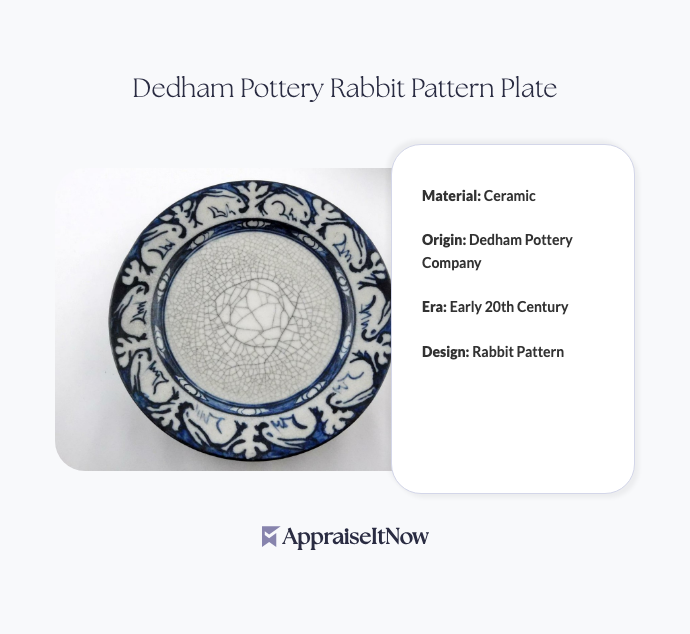<h1>How to Get Your Martin Brothers Bird Jar Appraised</h1>
<p>If you're the owner of a Martin Brothers bird jar, you possess one of the most distinctive and sought-after ceramic collectibles in the decorative arts market. These whimsical hand-crafted vessels, valued between <strong>$3,000 and $5,000</strong>, represent a convergence of artistic excellence and historical significance that commands serious attention from collectors and institutions alike. Whether you're considering selling, seeking insurance coverage, or simply curious about your collection's worth, understanding how to properly appraise a Martin Brothers bird jar is essential.</p>
<h2>Understanding Martin Brothers Ceramics and Their Market Value</h2>
<p>Before pursuing an appraisal, it helps to understand why these pieces matter. Are Martin Brothers ceramics valuable? Absolutely. The Martin Brothers—four talented siblings who established their renowned English pottery firm in the 1870s—created some of the most imaginative and technically masterful works in Victorian decorative arts. Their bird jars stand apart as their signature achievement, representing a unique intersection of sculpture, functional ceramics, and fantastical design.</p>
<p>What makes a Martin Brothers bird jar so special? These vessels combine functional storage with artistic expression through intricately hand-modeled creatures featuring expressive, often comical facial features. Each jar reflects the meticulous attention to detail and technical mastery that collectors prize, with hand-glazing techniques that create variations in color and texture even among pieces from the same production period. The limited production run—the Martin Brothers operated from the 1870s through the early 1900s—means supply remains finite, naturally supporting strong market values.</p>
<div class="callout tip"><p><strong>Collector's Insight</strong></p>
<p>Martin Brothers bird jars from the 1870s-1880s period typically command higher values than later examples due to rarity and the evolution of their glazing techniques.</p></div>
<h2>Key Factors That Influence Your Appraisal</h2>
<p>Understanding what appraisers examine helps you prepare for a professional valuation. Your Martin Brothers bird jar's assessed value depends on several interconnected factors that work together to determine its market standing within that $3,000-$5,000 range or potentially beyond.</p>
<p><strong>Size and proportions</strong> matter considerably. Larger, more imposing pieces generally fetch higher prices than smaller examples, as they command more visual presence and represent greater technical achievement. <strong>Glaze quality</strong> constitutes another critical evaluation point—the original hand-applied glazes that remain vibrant, undamaged, and showing the characteristic variations between individual examples are particularly valuable. Pieces with cracks, chips, or glaze deterioration will see corresponding value reductions.</p>
<p><strong>Condition of the modeling</strong> directly affects appraisal results. The expressive facial features that define these jars—the quirky expressions, detailed eyes, and individually crafted beaks—must be intact and clearly defined. Chips to noses, damage to eye inlays, or flattened features reduce value substantially. The <strong>rarity and uniqueness</strong> of your specific piece also factors heavily; some bird designs appear more frequently in auction records than others, with certain variants commanding premiums.</p>
<p>Documentation of provenance adds meaningful value. If your jar has exhibition history, previous ownership by notable collectors, or published references in Martin Brothers literature, these elements can increase appraised value by 15-30% compared to similar pieces without documented histories. Understanding whether your piece is fully marked with the artists' signatures and dating also influences valuation—fully signed and dated examples are particularly desirable.</p>
<h2>When Professional Appraisal Becomes Essential</h2>
<p>You should seek professional appraisal services when specific circumstances require documented valuations. If you're considering selling through auction houses or private dealers, a certified appraisal from a qualified expert adds credibility and helps establish realistic asking prices. Similarly, if you're planning to insure your Martin Brothers bird jar—whether as part of homeowners coverage or specialized fine art insurance—insurers typically require professional valuations for claims purposes.</p>
<p>Estate planning situations make appraisals indispensable. When transferring collections to heirs or establishing tax valuations for estate purposes, certified appraisals provide the documentation that satisfies legal and financial requirements. For those interested in exploring broader contexts, our resources on <a href="/blog/appraisals-for-fine-porcelain-and-ceramics-valuing-delicate-artistry">appraising fine porcelain and ceramics</a> offer comprehensive guidance on ceramic valuation principles.</p>
<div class="callout note"><p><strong>Legal Consideration</strong></p>
<p>USPAP-compliant appraisals are required for most insurance claims, estate proceedings, and charitable donation tax deductions, making professional certification essential for significant pieces.</p></div>
<h2>Identifying What Makes Your Piece Authentic</h2>
<p>Who were the Martin Brothers, and how do their signatures help authenticate your jar? The four Martin siblings—Wallace, Edwin, Walter, and Charles—each contributed distinctive skills to their pottery, with their marks and signatures appearing on authentic pieces. Understanding their marking practices helps distinguish genuine Martin Brothers work from later reproductions or attributed pieces.</p>
<p>Authentic Martin Brothers bird jars typically display the artists' signatures along with dates of creation, often incised or impressed into the base or body of the piece. The pottery's characteristic salt-glaze finish, combined with the hand-modeling evidence visible in slight irregularities and individual variations, helps authenticate pieces. The presence of kiln marks, specific glaze colors that evolved throughout their production years, and construction techniques all contribute to authentication.</p>
<p>Examining the modeling quality reveals authenticity markers. The Martin Brothers were known for exceptional anatomical attention within their whimsical designs—properly proportioned wings, realistic feather detailing, and individually crafted clay elements. Reproductions often lack this precise craftsmanship, appearing either too perfect (from mold production) or too crude (from less skilled artisans).</p>
<h2>Comparing Martin Brothers to Other Collectible Pottery</h2>
<p>How does a Martin Brothers bird jar compare to other famous pottery birds? While various potteries created decorative bird forms, what are the most sought-after vintage pottery pieces? The Martin Brothers occupy a unique position within ceramic collecting due to their distinctive artistic vision, technical excellence, and historical significance spanning the late Victorian and Edwardian eras.</p>
<p>Other notable collectible pottery traditions—Art Deco ceramics, Staffordshire figures, or Meissen porcelains—serve different collecting interests and market segments. However, the Martin Brothers' particular fusion of functional craft and fine art expression, combined with their limited production and the individual character of each piece, positions them as exceptional investments within the broader <a href="/types/memorabilia-and-collectibles">memorabilia and collectibles</a> market. Unlike mass-produced pottery, each Martin Brothers jar represents a genuine artistic creation rather than a reproduction from standard molds.</p>
<h2>The Appraisal Process for Ceramic Collectibles</h2>
<p>Determining accurate value for your Martin Brothers bird jar follows established appraisal methodology. Professional appraisers begin with detailed visual examination, photographing your piece from multiple angles to document condition, markings, and distinctive features. This documentation becomes crucial should your appraisal be needed for insurance claims or dispute resolution.</p>
<p>Condition assessment involves scrutinizing the glaze surface under appropriate lighting, examining the base for manufacturing marks and signatures, checking for hidden damage inside the jar cavity, and evaluating the structural integrity of the modeling. Appraisers compare your specific piece against recent auction results for comparable Martin Brothers examples, adjusting for differences in size, condition, rarity, and provenance. Research into current market demand, collecting trends, and the availability of similar pieces informs the final valuation.</p>
<p>For deeper understanding of ceramic valuation principles, exploring our guides on <a href="/blog/what-do-appraisers-look-for-when-appraising-antique-artwork">what appraisers look for in antique artwork</a> provides context applicable to three-dimensional ceramic art forms. The appraisal report ultimately establishes a defensible fair market value supported by comparable sales analysis, condition documentation, and expert professional judgment.</p>
<h2>Building a Strong Collection Documentation System</h2>
<p>Beyond individual appraisals, serious collectors benefit from systematic documentation practices. Maintain high-resolution photographs of each piece from multiple angles, including close-ups of markings, signatures, and any distinguishing features. Record acquisition information—where you purchased the piece, when, and for what price—as this provenance chain adds research value.</p>
<p>Keep detailed condition notes documenting any wear, repairs, or restoration work performed. Store appraisal reports, exhibition catalogs, insurance policies, and auction house documentation together in a secure location. If your Martin Brothers bird jar has appeared in publications, auctions, or exhibitions, compile these references. This comprehensive record-keeping approach parallels how professionals manage <a href="/blog/personal-property-appraisals-for-charitable-donations-maximizing-tax-benefits-through-accurate-valuations">personal property documentation</a> for tax and insurance purposes.</p>
<div class="callout tip"><p><strong>Collection Management</strong></p>
<p>Update your collection's appraisals every 3-5 years or whenever significant market changes occur, ensuring your insurance coverage and estate planning reflect current values.</p></div>
<h2>Market Trends Affecting Martin Brothers Values</h2>
<p>Understanding current market dynamics helps contextualize your appraisal results. Victorian and Edwardian decorative arts have experienced renewed collector interest over recent years, particularly among buyers valuing handcrafted, individual artistic expression over mass-produced alternatives. The finite supply of genuine Martin Brothers pieces—combined with growing awareness among interior designers and collectors—supports stable pricing with appreciation potential.</p>
<p>Digital marketplaces and auction platforms have made comparative pricing research more accessible, yet rare examples still emerge primarily through traditional auction houses, specialist dealers, and private collections. Auction results from houses specializing in decorative arts provide market benchmarks, though private sales between collectors often exceed public auction prices due to personalized negotiation and buyer motivation.</p>
<h2>Choosing the Right Appraiser for Your Martin Brothers Jar</h2>
<p>Selecting a qualified appraiser ensures you receive accurate, defensible valuations. Look for professionals credentialed through recognized organizations—the American Society of Appraisers (ASA), International Society of Appraisers (ISA), or Appraisers Association of America (AAA)—who specialize in decorative arts and ceramics. Your appraiser should demonstrate specific knowledge of Martin Brothers pottery, Victorian ceramics, and current market conditions.</p>
<p>Verify that your appraiser will provide USPAP-compliant reports suitable for insurance purposes, auction house use, or legal proceedings. Professional appraisers affiliated with platforms like <strong>AppraiseItNow</strong> combine credentialed expertise with accessible service, allowing you to submit documentation, photographs, and descriptions online while receiving certified valuations from specialists across the United States.</p>
<div class="callout note"><p><strong>Key Takeaway</strong></p>
<p>A certified appraisal of your Martin Brothers bird jar provides the accurate valuation, condition documentation, and professional authentication you need for insurance, sale, or collection management purposes. Whether your piece falls within the standard $3,000-$5,000 range or represents a rare variant commanding premium value, professional expertise ensures you understand both the historical significance and monetary worth of this exceptional ceramic collectible.</p></div>







.avif)







